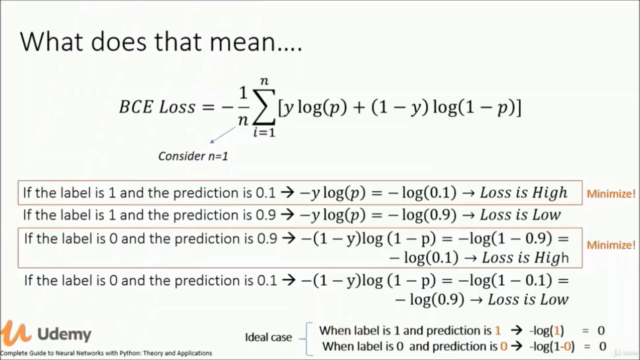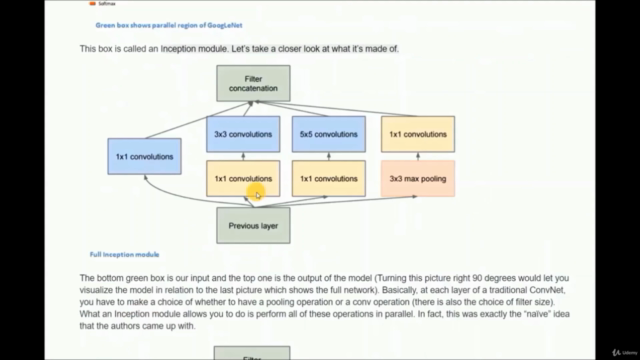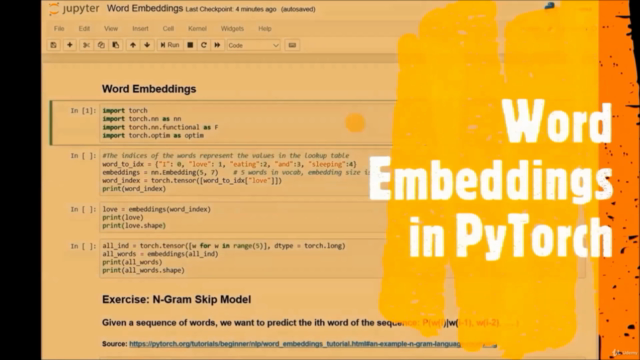The Complete Neural Networks Bootcamp: Theory, Applications

Why take this course?
It seems like you've outlined a comprehensive curriculum on deep learning with a focus on Convolutional Neural Networks (CNNs), Recurrent Neural Networks (RNNs), and Transformers, particularly within the context of PyTorch. Here's a brief overview of what each section covers, along with some additional insights:
-
Practical Convolutional Networks in PyTorch: This section will guide you through building and training a CNN for image classification tasks, such as recognizing handwritten digits.
-
Deeper into CNN: Improving and Plotting: You'll learn how to refine your CNN model, including techniques like data augmentation, and how to plot the training and validation accuracy to visualize performance.
-
CNN Architectures: This section covers various architectures that have been influential in the field of computer vision, including AlexNet, VGGNet, InceptionNet, and Residual Networks (ResNets), among others. It also touches on some object detection frameworks.
-
Residual Networks: You'll dive into the details of Residual Networks, which are crucial for training deep neural networks. You'll learn how they work and build one from scratch in PyTorch.
-
Transfer Learning in PyTorch - Image Classification: Transfer learning involves using a pre-trained model and fine-tuning it for a new task. In this section, you'll apply transfer learning to classify images of insects (ants and bees), leveraging data augmentation to improve performance.
-
Convolutional Networks Visualization: Understanding what your CNN is learning is key to debugging and improving your models. This section covers visualizing feature maps, which can help you understand the hierarchy of features learned by the network.
-
YOLO Object Detection (Theory): YOLO (You Only Look Once) is a popular real-time object detection system. In this section, you'll learn its theory and components.
-
Autoencoders and Variational Autoencoders: These are types of generative models used for unsupervised learning tasks. You'll explore how they work and the challenges they face, particularly in learning data distributions.
-
Recurrent Neural Networks: This section covers RNNs, including their benefits and limitations. It also delves into Long Short-Term Memory (LSTM) networks, which are capable of capturing long-range dependencies in sequential data.
-
Word Embeddings: Word representations are critical for NLP tasks. In this section, you'll explore different types of word embeddings and learn how to implement them in PyTorch.
-
Practical Recurrent Networks in PyTorch - Build a Chatbot: Applying RNNs and LSTMs to generate text is both challenging and rewarding. In this section, you'll create a chatbot that can generate stories or responses based on input text.
-
Sequence Modelling: This section covers sequence-to-sequence (Seq2Seq) models, which are used for tasks like machine translation. It also introduces attention mechanisms, which help models focus on relevant parts of the input sequence when predicting an output sequence.
-
Practical Sequence Modelling in PyTorch - Build a Chatbot: Building on the previous section, you'll implement a chatbot using Seq2Seq models and attention mechanisms.
-
Saving and Loading Models: Learning how to save and load your trained models is essential for model deployment and experimentation. This section will guide you through the process in PyTorch.
-
Transformers: The final section covers the Transformer architecture, which has set new benchmarks for a variety of NLP tasks. You'll learn about its components, including self-attention and positional encoding, and how to implement it in PyTorch to build a chatbot.
This curriculum provides a solid foundation in deep learning with a focus on practical applications using PyTorch. It covers both the theoretical underpinnings and the hands-on skills necessary to build state-of-the-art models for image classification, object detection, and natural language processing tasks.
Course Gallery




Loading charts...
Comidoc Review
Our Verdict
The Complete Neural Networks Bootcamp offers a wealth of information on deep learning topics while balancing theoretical concepts and practical applications. The instructor's ability to explain complex ideas sets this course apart, making it an excellent choice for AI professionals looking to expand their knowledge. However, expect varying audio quality and inconsistent explanations that may require additional resources to fully grasp every topic.
What We Liked
- Instructor excels at explaining complex topics from scratch with examples and clear narratives
- Thorough coverage of neural networks, convolutional networks, recurrent networks, PyTorch, backpropagation, loss functions, and regularization techniques
- Updated regularly to include the latest state-of-the-art models like Transformers and BERT
- Comprehensive content for AI professionals seeking in-depth knowledge of deep learning topics
Potential Drawbacks
- Initial videos have lower audio quality, with instructors sometimes sounding unprepared or using excessive jargon
- Lacks clear structure and explanation of some concepts, such as loss function definition for multiple samples
- Course can be too theoretical at times and may require additional introductory material before starting
- Audio quality varies significantly, with inconsistent volume levels and occasional echo